Did You Know?
Mohenjodaro displays one of the most advanced Urban planning ideas implemented in antiquity
27°19'41.7"N 68°07'53.3"E
![]()
Mohenjodaro is on the UNESCO World Heritage Site List
Mohenjodaro displays one of the most advanced Urban planning ideas implemented in antiquity
The Best Time to Visit Sindh Province is Winters. Preferably from September to April Peak Summers (May to August) can get extremely hot with temperatures reaching higher than 40 °C . Hence Summers are not recommended.


The Mohenjodaro Museum, located adjacent to the archaeological site of Mohenjodaro in Sindh, Pakistan, was established to display the extensive range of artifacts uncovered at this significant historical site. The building itself, designed by the French architect Mons. M. Ecochoro, was completed in 1962 and reflects a simple yet modern architectural style. Officially inaugurated on January 20, 1967, by then-President Field Marshall Muhammad Ayub Khan, the museum serves as a critical institution for preserving and showcasing the cultural and historical heritage of the Indus Valley Civilization. The foundation for the museum was laid earlier on March 16, 1960, by Mr. Habib-ur-Rehman, the Federal Minister for Education at the time.
The museum's collection comprises a diverse array of artifacts, including pottery, figurines, toys, sculptures, utensils, and other cultural items that provide valuable insights into the life and achievements of the Indus Valley people. These items, which are housed on the first floor of the museum building, are organized into galleries that offer visitors a glimpse into the material culture of Mohenjodaro.
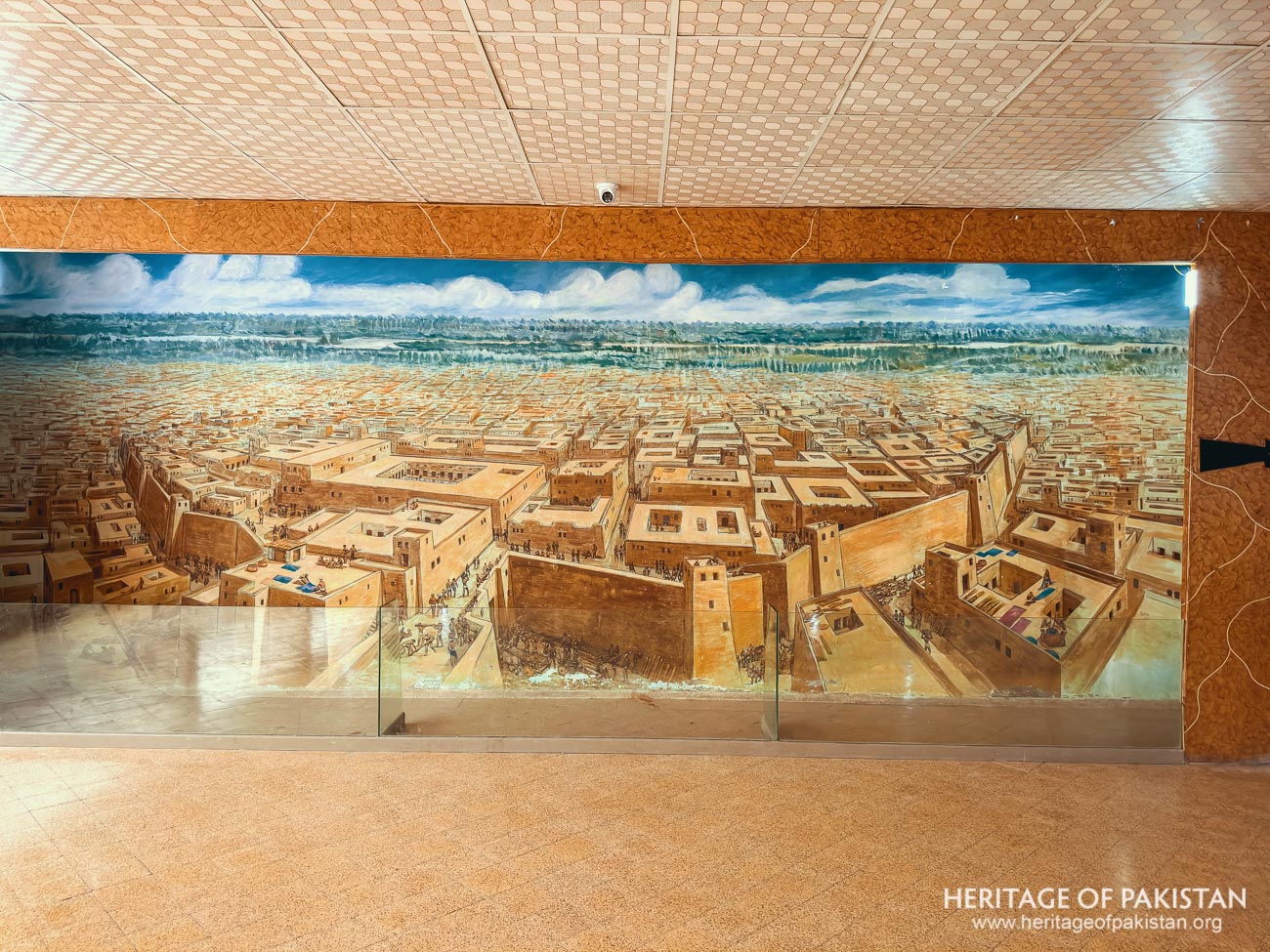
Additionally, the museum complex includes offices, storage areas, a rest house, and various other amenities necessary for the maintenance and operation of the site. The museum’s modern design complements its function as both a scholarly resource and a public educational center.
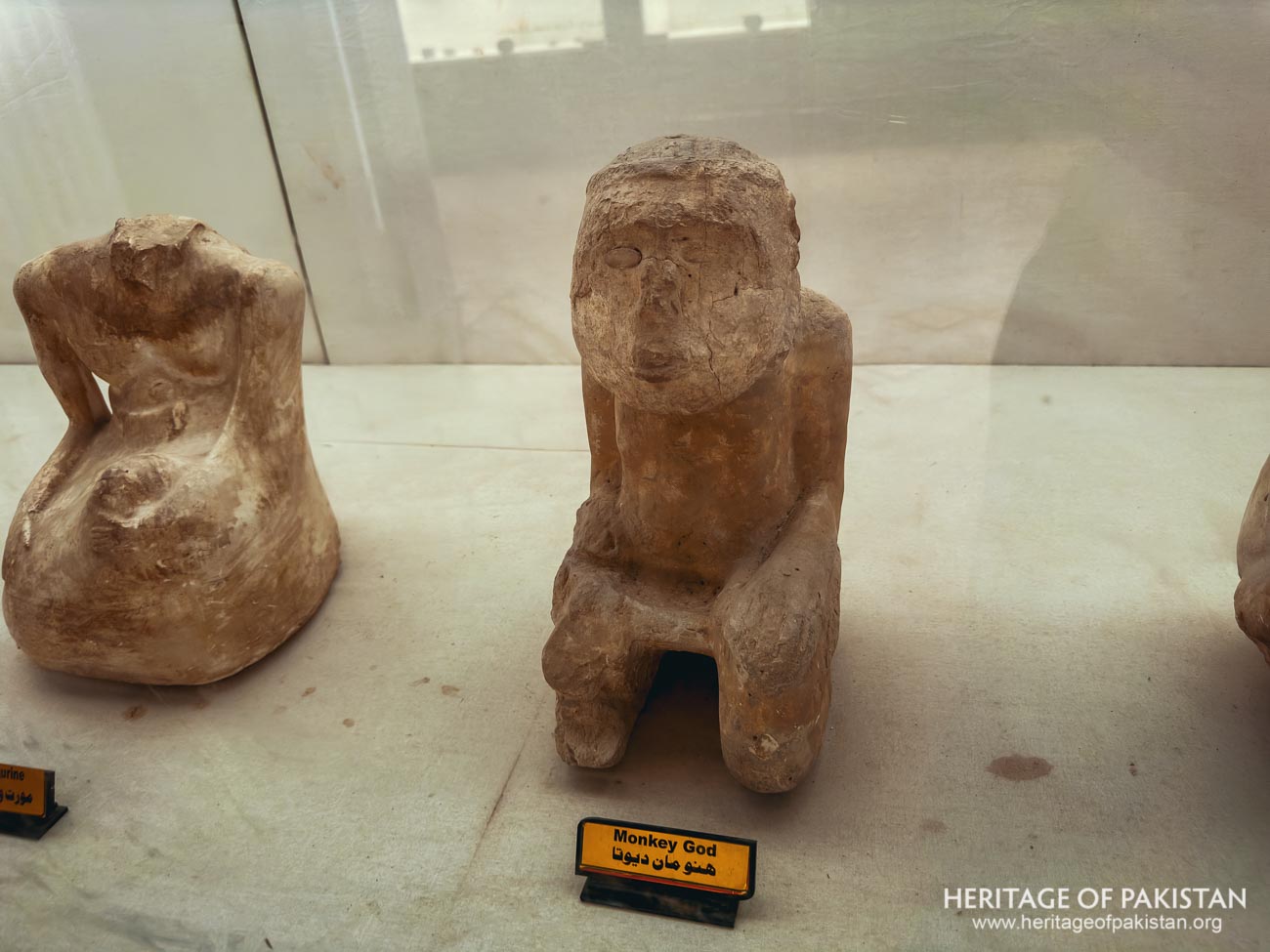
Mohenjodaro itself was one of the principal cities of the Indus Valley Civilization, which flourished between 2500 and 1500 BCE. Renowned for its advanced urban planning and architectural sophistication, the Indus Valley Civilization stands as one of the most highly developed ancient civilizations. The discovery of Mohenjodaro in the 1920s, after being buried for over 3,000 years, was a landmark moment in the field of archaeology. Excavations at the site uncovered a remarkably well-planned urban settlement, with an intricate drainage system, standardized construction techniques, and evidence of a complex social structure.
The rediscovery of Mohenjodaro revealed not only the city’s impressive urban infrastructure but also an array of artifacts that shed light on the daily lives, beliefs, and artistry of the Indus people. The artifacts displayed at the museum include objects used for religious and ceremonial purposes, such as figurines that likely represent deities or mythological figures, as well as everyday items like pottery and tools, which illustrate the technological and artistic capabilities of the civilization.
The museum’s collection also includes toys and small sculptures, which provide insight into the social and recreational aspects of life in Mohenjodaro. The presence of these items suggests a society that valued craftsmanship and artistic expression, in addition to its focus on urban infrastructure and civic organization. Pottery, an essential part of the museum's display, is particularly notable for its geometric patterns and stylized designs, indicating the aesthetic sensibilities of the Indus Valley people.
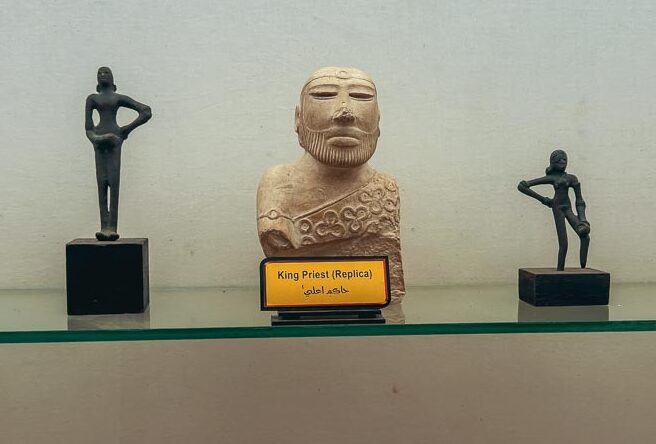
The museum not only serves as a repository for these important cultural objects but also plays a crucial role in the ongoing preservation and study of Mohenjodaro and the Indus Valley Civilization. As an important research facility, it provides scholars with the opportunity to study the artifacts in detail, contributing to a broader understanding of the region’s ancient history. Moreover, the museum serves as an educational resource for the public, allowing visitors to engage with the rich history of Mohenjodaro and its contributions to the development of early urban civilizations.
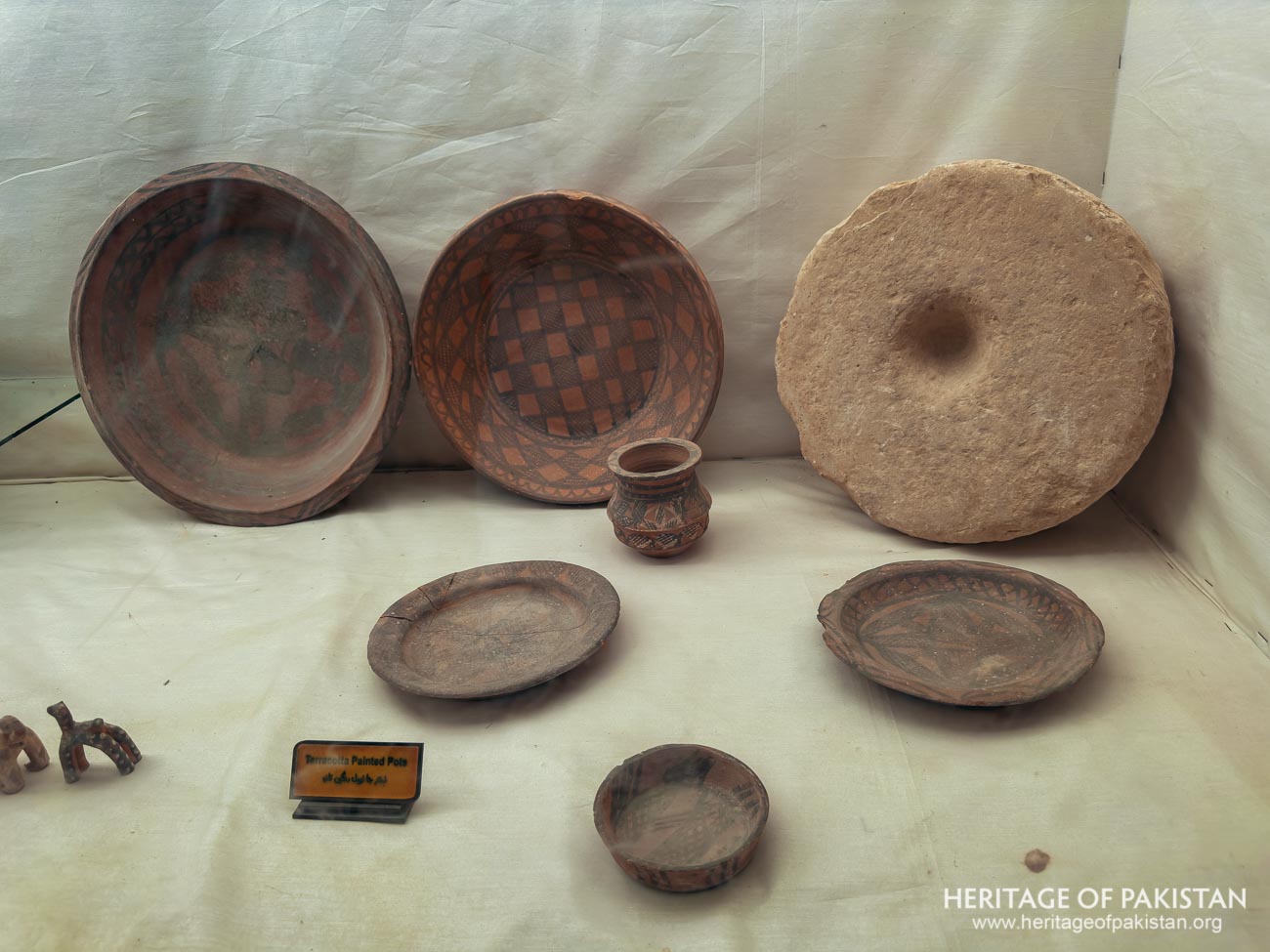
The design of the Mohenjodaro Museum building prioritizes simplicity and functionality, with careful consideration of local wind patterns and climate.
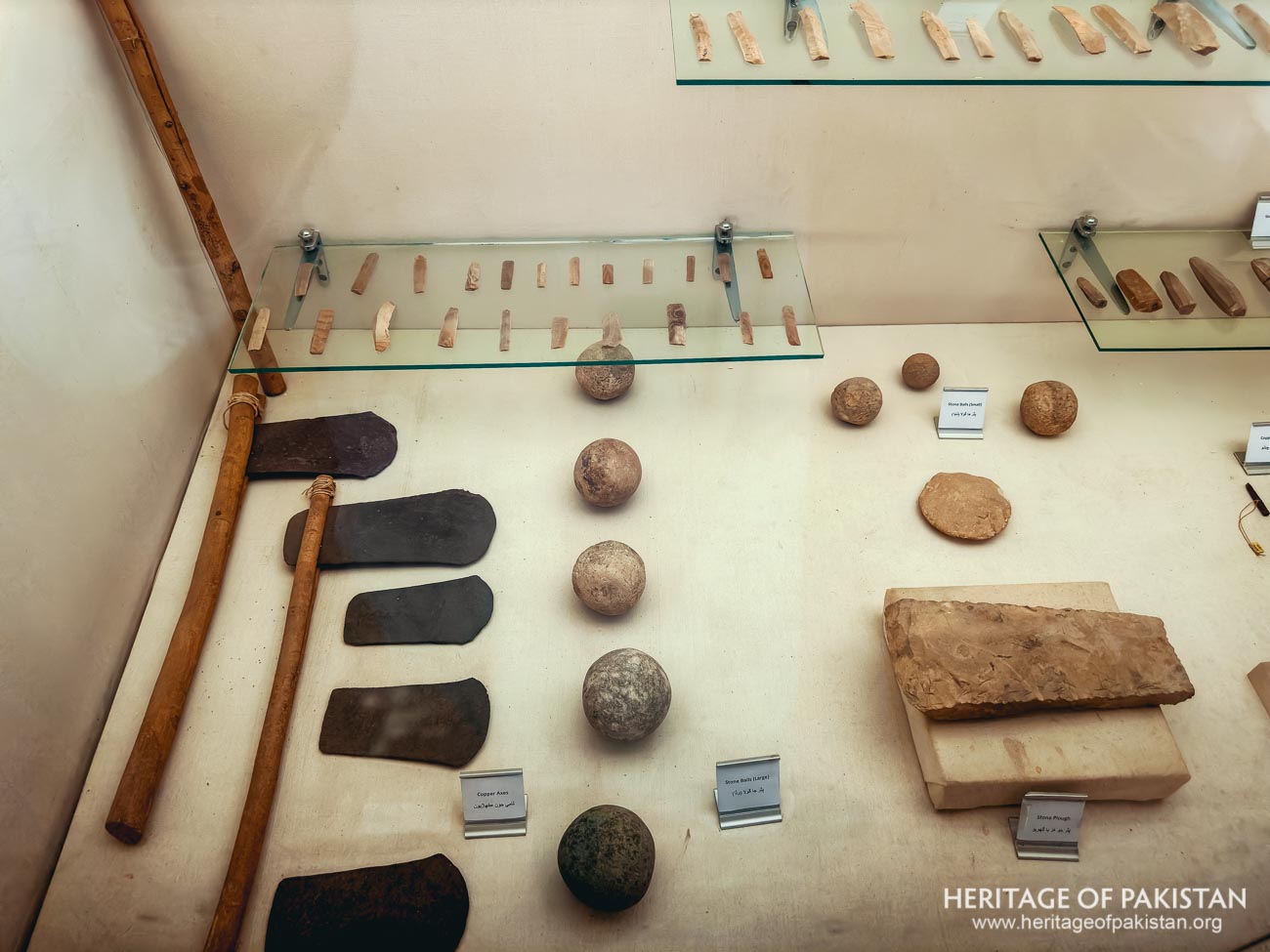
Constructed to enhance natural ventilation, the ground floor is an open space with minimal structural elements, such as blank walls and supporting pillars, allowing wind to flow freely through the area. The Mohenjodaro Museum hosts an extensive collection of artifacts uncovered at the archaeological site, including figurines, pottery, tools, and other cultural items. Visitors can also explore a souvenir shop on the ground floor, where replicas of the seals, sculptures, and figures are available for purchase. The ticket counter for the museum is also located on the ground floor. The main museum is housed on the first floor, with the walls made of plain brick without decorative embellishments. Only the horizontal sections of the building, including the terrace, are constructed from concrete. A prominent relief of a Brahmani bull in white is also embossed on the museum's outer wall, immediately drawing attention as one approaches the structure.
The ground floor is designed to accommodate larger objects and is intentionally open to allow the free passage of air, ensuring a comfortable environment. The first floor, where the main galleries are located, showcases various artifacts from the Mohenjodaro archaeological site. Additionally, the building includes offices and other functional spaces that support the museum's operations. A notable feature of the museum at the first floor is the 30-foot by 10-foot mural at its entrance, a collaborative work between an Italian artist and an artist from the Department of Archaeology. The mural presents an imaginative view of ancient Mohenjodaro, offering visitors a visual interpretation of the ancient city.
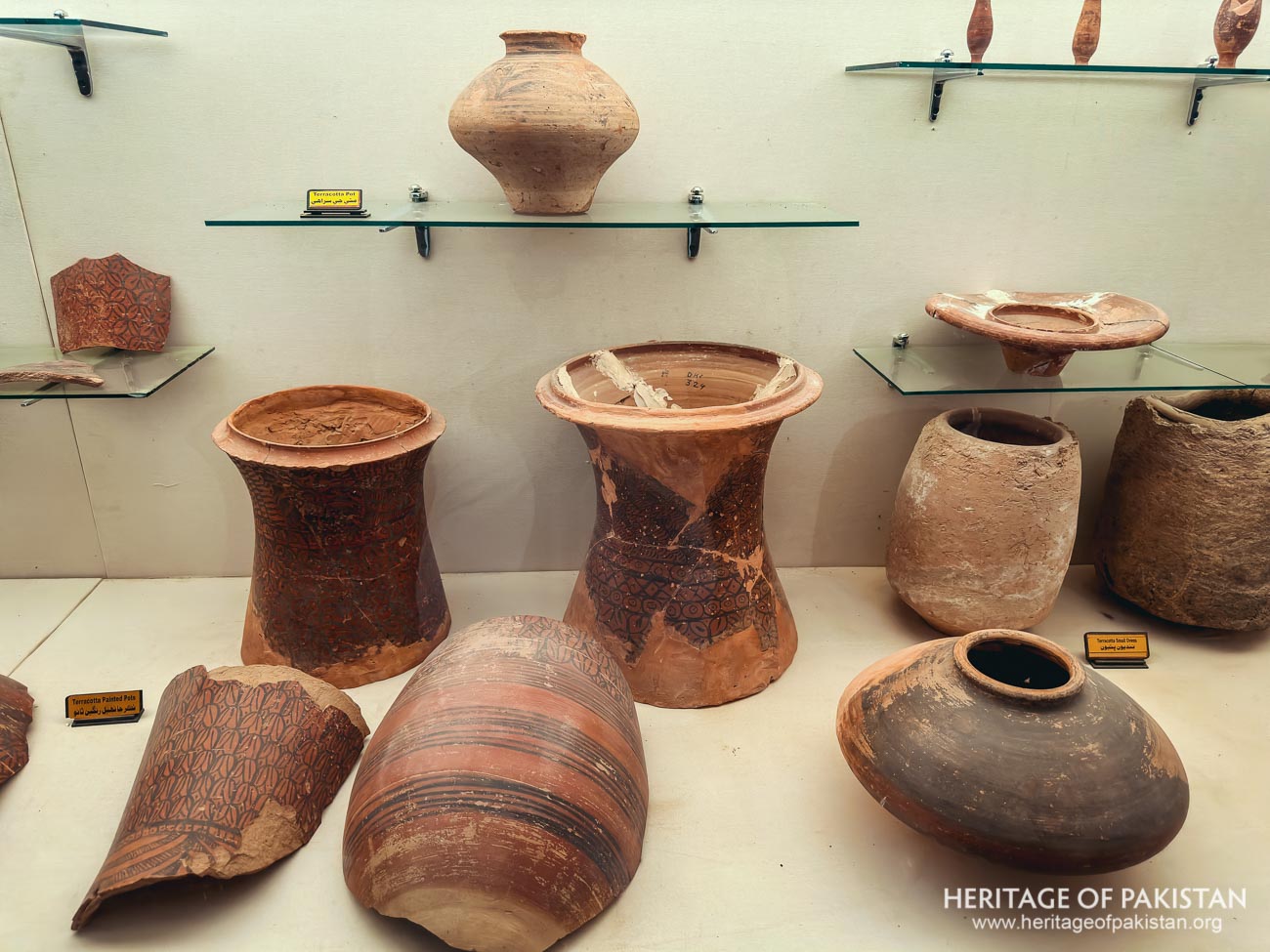
Mr. Ali Hyder, a Heritage Conservator at the Archaeology Office in Mohenjodaro, descries in detail various showcases at the museum as described in his document, "A Visitor's Guide to the Museum of Mohenjodaro." The first three showcases in the museum display artifacts such as stone tools from the Soan Valley near Rawalpindi, as well as antiquities from the Rohri and Sukkur hills, Kot Diji, and Amri. These artifacts offer an overview of early human activity in the region.

The first showcase is divided into two sections: the first displays a diorama depicting activities of early Stone Age humans alongside original stone tools estimated to be around 500,000 years old. The second section focuses on the Neolithic Age, displaying stone implements from the Sukkur and Rohri hills, dating back approximately 200,000 years. The second showcase features a representative collection of pottery from Kot Diji, accompanied by a diorama illustrating the archaeological site itself. The third showcase highlights the excavations at Amri, an important town of the Indus Valley Civilization, with select pottery pieces displayed alongside a diorama of the site. Amri, located between Mohenjodaro and Hyderabad, predates Mohenjodaro and may have been contemporary with Kot Diji.
Showcase four is dedicated to displaying chert blades, stone balls, and a few copper objects, including hand axes and a fish hook. These artifacts suggest that the inhabitants of Mohenjodaro used weapons such as axes, spears, daggers, and arrows. Showcases six through nine display a variety of pottery specimens, both plain and painted, unearthed in large quantities from Mohenjodaro. The pottery ranges from massive storage jars to small household utensils and cosmetic containers.
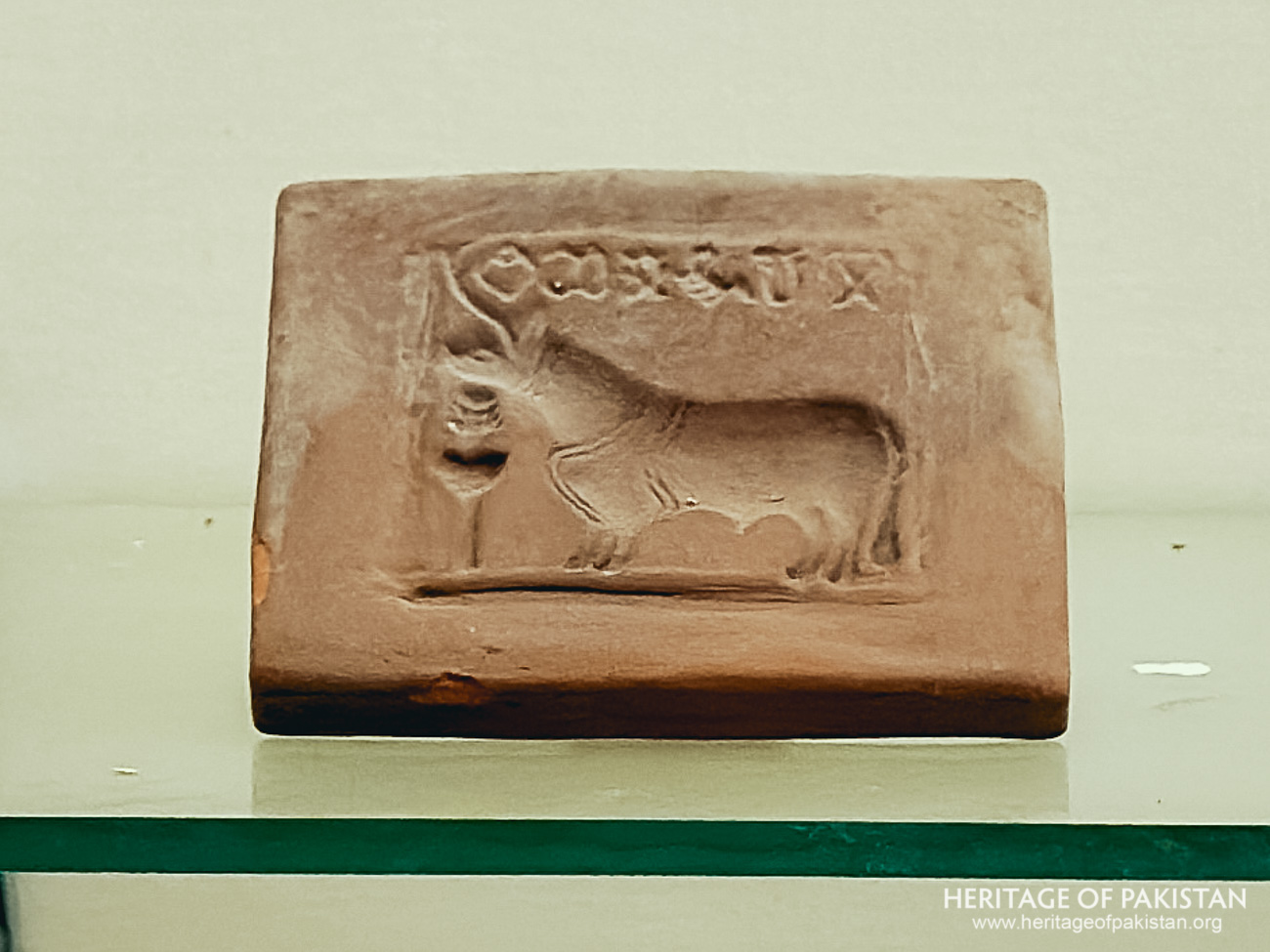
A larger room following these showcases houses enormous storage jars with thick textures, including a large terracotta tub, which may have been used for bathing children. Showcase ten contains terracotta figurines of the Mother Goddess, male and female stone heads, a stone ram, and replicas of two famous statues—the "Priest King" and the "Dancing Girl." It is worth noting that the original "Priest King" statue is housed in the National Museum of Pakistan in Karachi, while the original "Dancing Girl" is preserved at the National Museum in New Delhi, India. Showcase eleven features the seals, arguably the most distinctive objects found at Mohenjodaro. These square seals, adorned with animal figures and inscriptions, remain undeciphered but are believed to represent important aspects of the Indus Valley script and culture.
Through its comprehensive collection and thoughtful design, the museum offers a window into the ancient world of the Indus Valley Civilization and continues to play a crucial role in preserving and interpreting this significant archaeological heritage.
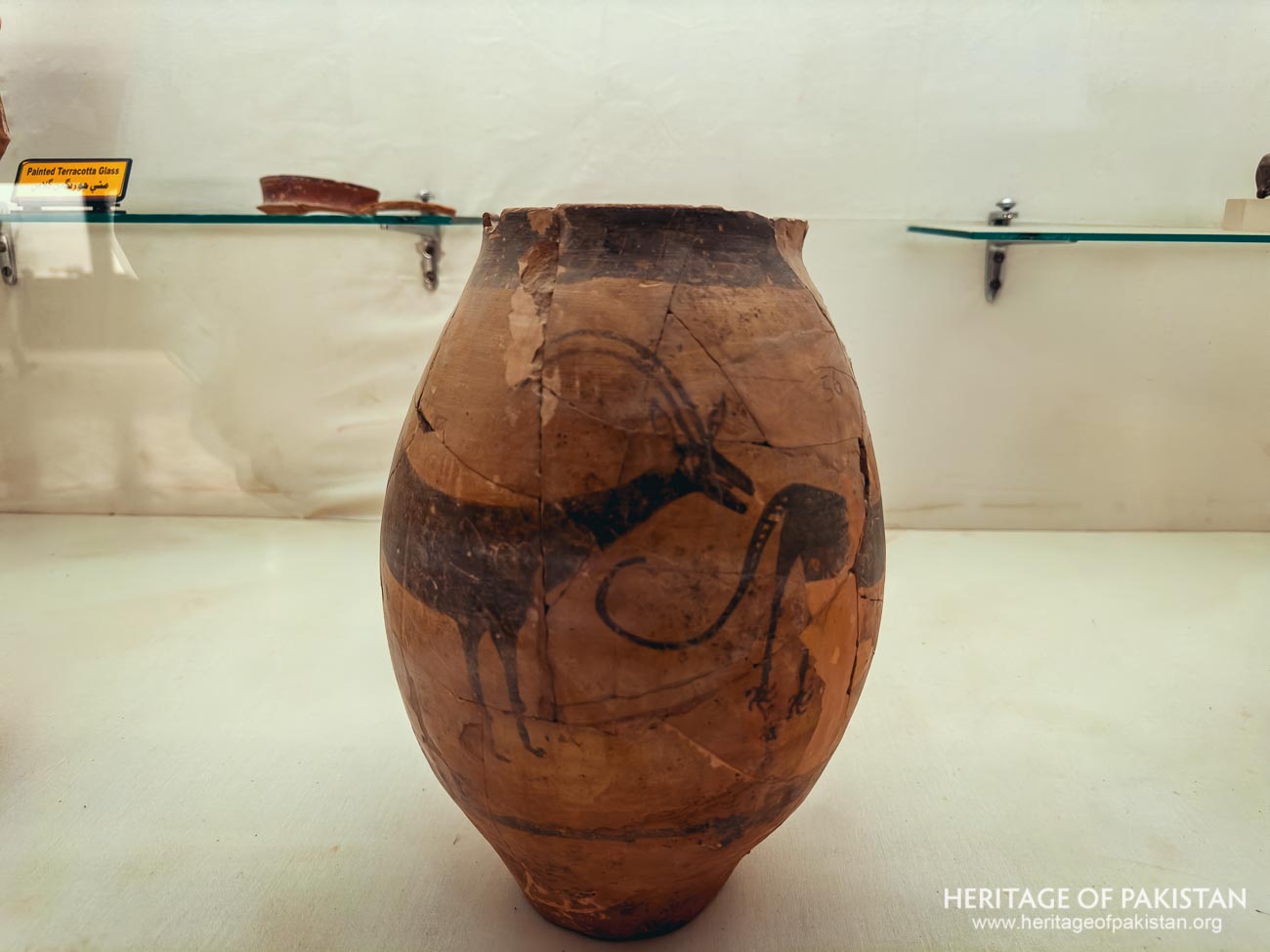
Discover the Mohenjodaro Museum image gallery and immerse yourself in photographs

All Photographs by Syed Noor Hussain and Sania Azhar.
All Rights Reserved. Photos may be used for Non-Commercial, educational, Artistic, Research, Non-Profit & Academic purposes.
Commercial uses require licensing agreement.


Add a review